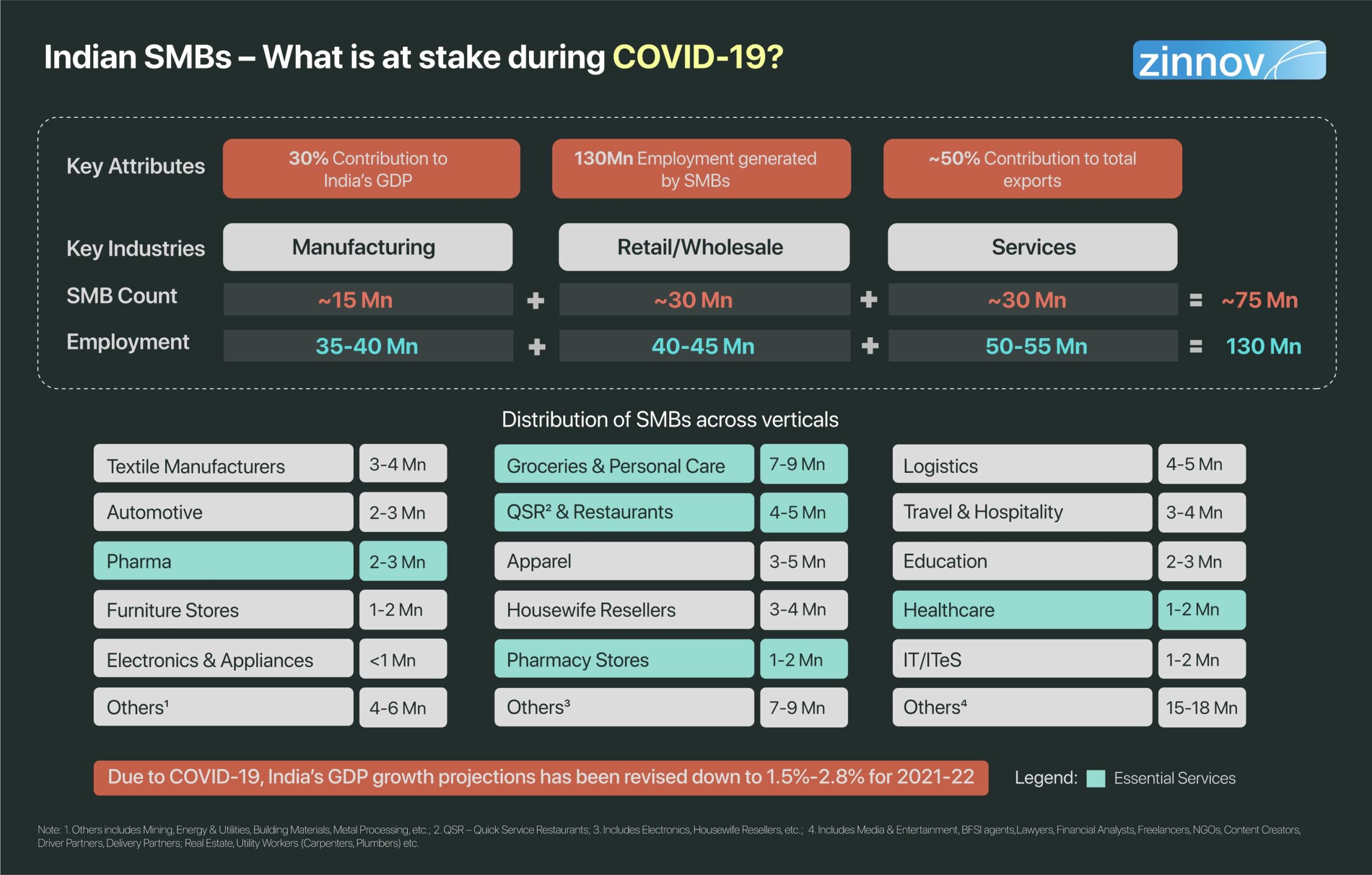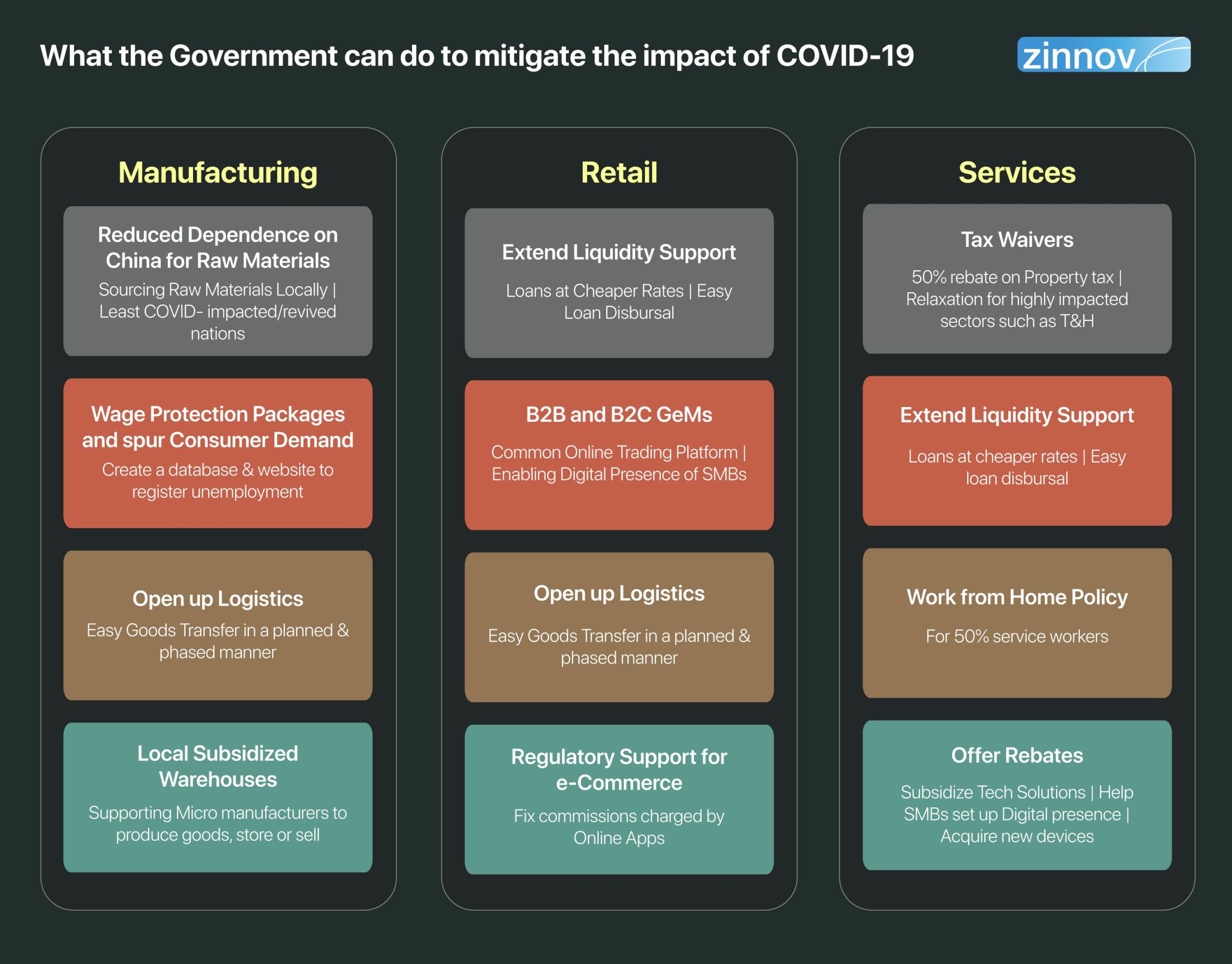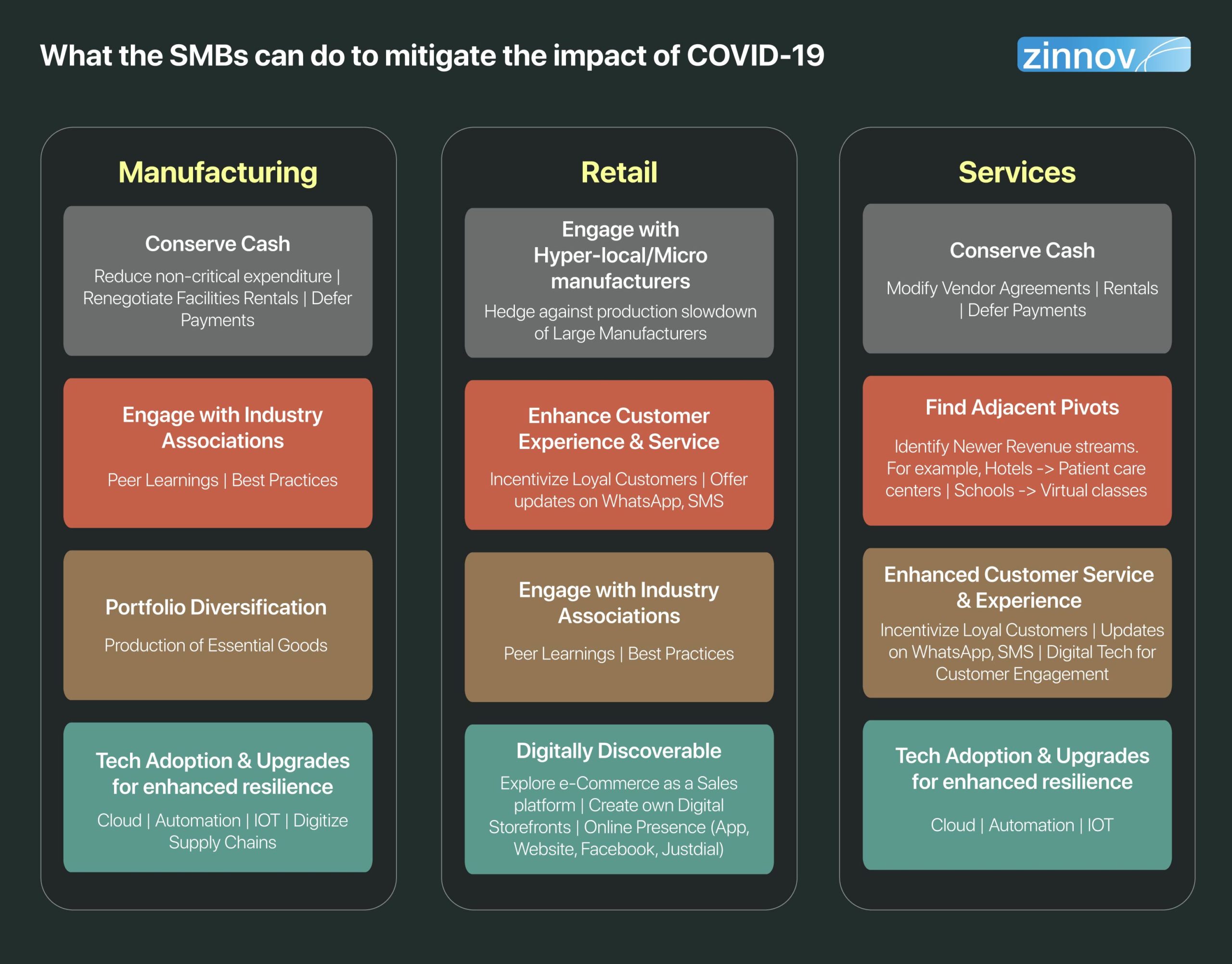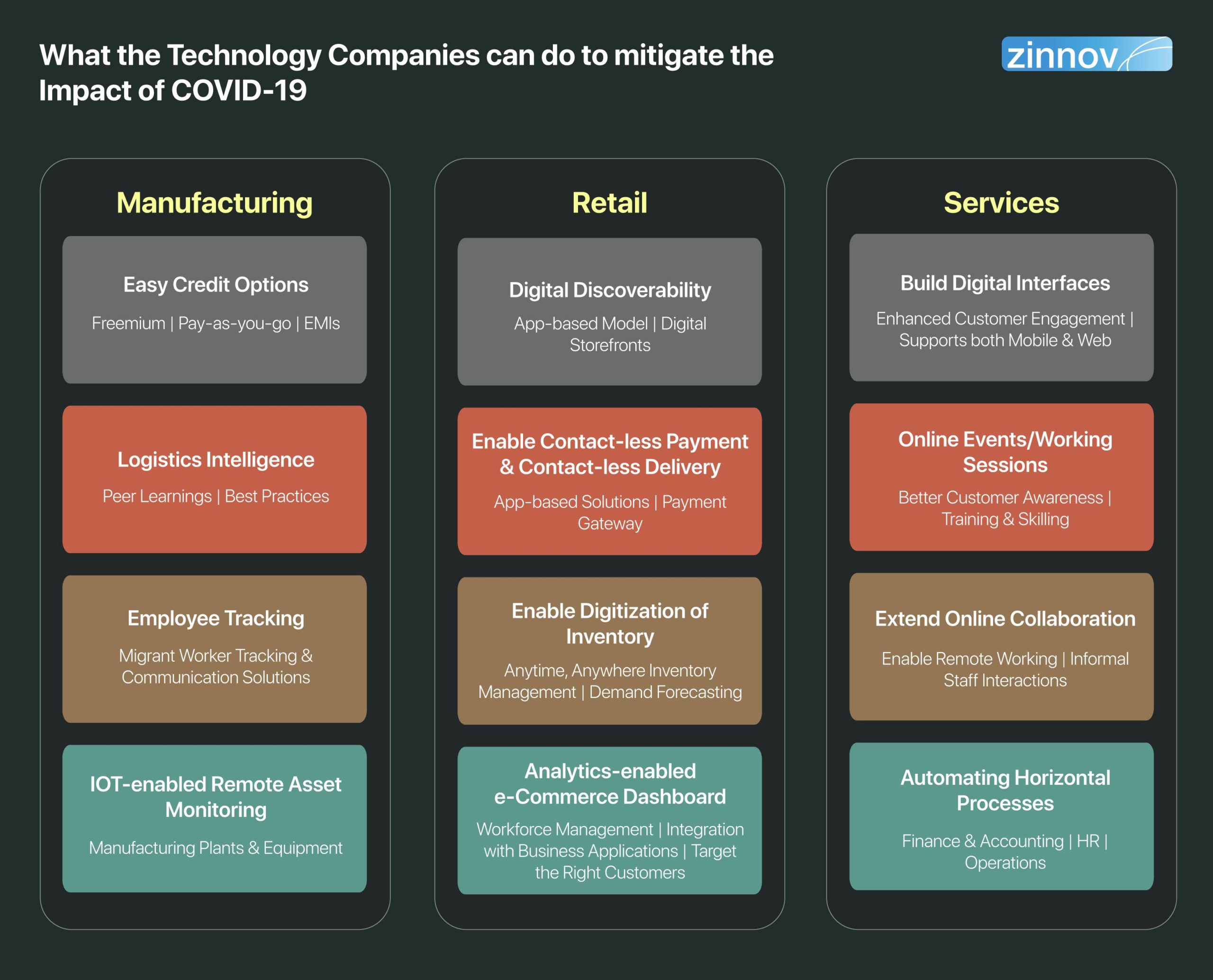|
|
Sudha’s eatery is only one of nearly 75Mn SMBs (Small Medium Businesses) currently operational in India, that are one of the cornerstones in the country’s economy, contributing upwards of 30% to the country’s GDP and employing 130Mn+ people.
India’s 75Mn SMBs contribute upwards of 30% to the country’s GDP and employ 130Mn+ people.

The nearly 75Mn SMBs can be split across three major verticals – Manufacturing (~15M), Retail & Wholesale Trade (~30 Mn), and Services (~30Mn).
All three verticals have been hit hard by COVID-19, but Manufacturing has taken the brunt of it, with plants and factories across the country shut down (if they do not manufacture essential goods). Since a majority of these are small, contract manufacturers or suppliers for larger OEMs (Original Equipment Manufacturers), they have witnessed significant demand vaporization. Retail, on the other hand, is witnessing a surge in demand across groceries, personal care items, and pharmaceuticals. While people are stocking up on essentials, thereby driving the demand up in retail, it is likely to slow down over the next 2-4 weeks, however. In fact, the profitability of most retail businesses for FY20-21 is under threat. In the Services vertical, Healthcare has been the least hit, with Travel & Hospitality taking the brunt of the lockdown. At the most, businesses in this vertical will be affected for the next 3-4 months, with many companies’ margins in the negative for FY20-21.
To mitigate the effects of COVID-19 and ensure the survival of the SMB sector, it is critical for the Government, the SMBs, and the technology companies to work together to formulate concrete strategies and deploy them. All three stakeholders in the SMB sector need to prioritize spurring consumer spending, which acts as an engine of economic activity and growth. However, with fears of a recession looming, this needs sensitivity and care in its approach to adopt and implement.

Retail:
Retail SMBs who face liquidity crunch require government help to access loans at cheaper rates enabled through easy loan disbursal. Creating a common online Government e-Marketing place for B2B and B2C SMBs will go a long way in helping these businesses stay afloat. The Government can also provide regulatory support to SMBs for e-commerce by fixing commissions charged by online apps.
The Government should incentivize technology start-ups working with SMBs, create access to loans at cheaper rates, and enforce stricter work from home policy.
Services:
50% rebates on Property tax, relaxation and/or tax waivers for highly impacted sectors such as Travel & Hospitality, access to subsidized tech solutions to help Services SMBs to set up digital presence – figure on top. Additionally, a Government-mandated, stricter work from home policy for at least 50% of the service workers will enable Services SMBs to ensure business continuity while taking care of workers’ safety.
While the Government might not be able to relook at all policies and programs, even implementing some of these recommendations will help ease the burden on the SMB sector significantly.

To successfully navigate the current turbulent seas, the SMBs need to –
Manufacturing
Retail
Services
The SMBs should diversify portfolio into producing essential goods, explore e-commerce as a sales platform, and enhance customer service and experience.
Among all these, the biggest impact will be from digital tech adoption. SMBs that digitize their supply chains will be better prepared to manage unexpected and unforeseen disruptions. However, digital adoption and implementation needs to be done in phases, with investments – both time and capital – channelized in the right way.

Retail: Technology companies need to enable contactless payment and contactless delivery through app-based solutions and payment gateways. With high demand fluctuation, leveraging Data Analytics to enable SMBs to target the right customers, will be key. Further, digitization of inventory and building digital interfaces and digital storefronts to enhance customer engagement will prove beneficial for retail SMBs in the near to medium term.
The Technology Companies should provide SMB credits for tech purchase, leverage Data Analytics to reach the right customers, and help build digital interfaces.
Services: The need to enable secure remote working wherever possible, by leveraging collaboration tools and security solutions will be critical in ensuring business continuity for several Services SMBs. To enhance customer engagement and awareness, SMBs need to partner with technology companies to build digital interfaces and conduct online events, workshops, webinars, and working sessions that aim to train, skill, and reskill. Another avenue that SMBs can explore is leveraging Automation for horizontal processes like Finance & Accounting (F&A), HR, Marketing, etc.
While COVID-19 can potentially accelerate digital tech adoption in the SMB sector, technology companies will be instrumental for SMBs to ride out the current storm and emerge stronger on the other side.
